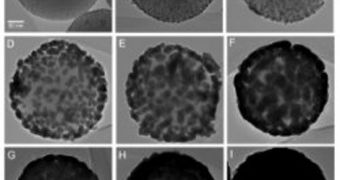A number of scientists from four universities in the United States recently announced plans to start researching methods how to use light-activated nanoshells as basic components for innovative 2D and 3D structures. The nanoshells themselves were produced by experts at the Rice University, and they could make up the backbone of future generations of metamaterials (a class of materials that absorb, bend and redirect electromagnetic radiation), chemical sensors, and nanoscale lasers. The building blocks can be made to self-assemble, and researchers plan to use them as children would use Lego pieces to create models of their favorite cars or airplanes.
“We used the method to make a seven-nanoshell structure that creates a particular type of interference pattern called a Fano resonance. These resonances arise from peculiar light wave interference effects, and they occur only in man-made materials. Because these heptamers are self-assembled, they are relatively easy to make, so this could have significant commercial implications,” explains Rice professor of physics and astronomy Peter Nordlander. He is also the coauthor of a new study detailing the findings, which appears in this week's issue of the highly-regarded journal Science.
Nanoshells are malted milk ball-like structures that are about 20 times smaller than human red blood cells. They are covered with gold, and contain a spheric glass bead at their cores. Designing nanoshells that interact with only specific wavelengths of light is relatively simple. All researchers have to do is vary the size of the bead, and the thickness of the gold layer around it. “Nanoshells were already among the most versatile of all plasmonic nanoparticles, and this new self-assembly method for complex 2D and 3D structures simply adds to that,” explains the Rice Stanley C. Moore Professor in Electrical and Computer Engineering Naomi Halas, who was also the inventor of the nanoshells. She is also a professor of physics, chemistry and biomedical engineering at the university.
Partial funding came from the US National Science Foundation (NSF), with additional money being provided by the US Air Force (USAF) Office of Scientific Research, the Department of Defense (DoD), the Robert A. Welch Foundation, the Department of Energy (DOE), and Harvard University. The inspiration to start this research came from Nordlander, the world's leading theorist on nanoparticle plasmonics. The leader of the team was Harvard University applied physicist Federico Capasso. Scientists at Rice and Harvard were joined by experts at the University of Texas in Austin and the University of Houston.

 14 DAY TRIAL //
14 DAY TRIAL //